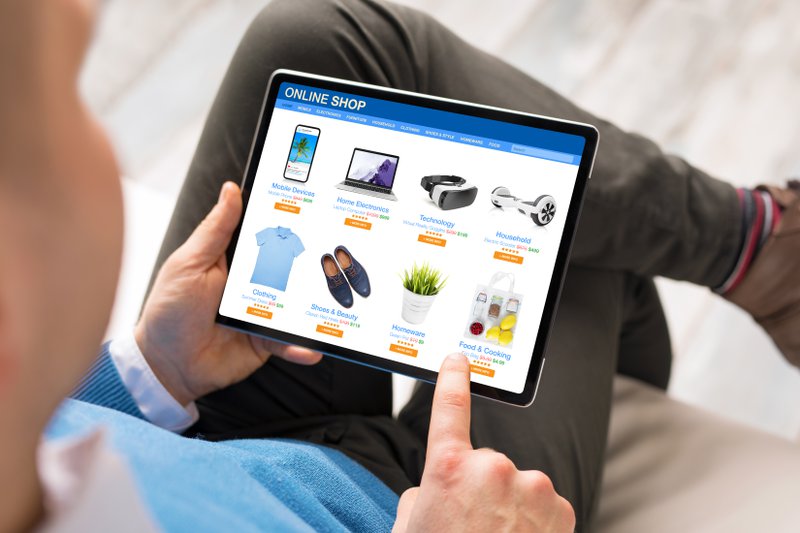Merchandising isn’t just for brick-and-mortar stores. Especially in an online setting, eCommerce merchandising is key to making products easier to find.
Merchandising enables brands and retailers to make strategic product display arrangements to maximize customer engagement. It also ensures product inventories can keep up with demand. In turn, more prospects become paying customers, and your revenue goes up.
Of course, merchandising works a bit differently online than it does in a store. Customers are more inclined to purchase a product they can see, hold, fit, or even taste it. But unlike physical shops, online stores have limited ways to offer actual products for closer inspection.
Thankfully, eCommerce merchandising has a few features that can create a better customer experience. Let’s look at four insights that will help you build an effective eCommerce merchandising system.
1. Set up Intuitive Product Presentation to Lead Product Discovery
Online shopping relies heavily on visual appeal because there’s little else to offer. For this reason, how you present your product is often as important as the product itself.
In its basic form, each product should have a single dedicated page that displays a compelling image and contains helpful information. Then, depending on current trends or the season, you can spotlight certain products on the home page or feature them in their category pages.

A compelling product description is essential, so it’s wise to update descriptions from time to time with new SEO keywords and fresh content. eCommerce merchandising also offers opportunities to add details that will further entice customers. This includes social proof such as customer reviews or endorsements. New images and videos can bring products to life as well.
For hot-selling items, you can update and share the remaining stock inventory to bring a sense of urgency. Many customers will act simply upon seeing how many others have purchased that item.
2. Leverage Collections to Help Curate Similar or Related Products
Most customers love a great deal. Whether it’s a sale, a buy-one-get-one promo, or a discounted bundle, customers won’t say no to special offers. Bundling, in particular, can help brands boost sales, reduce inventory, and popularize slower-selling items.
Bundling offers customers who are buying a single product the opportunity to add related products at a discounted rate. So, buying the set rather than each product individually is cheaper. A good eCommerce merchandiser makes it easy to buy a shirt; the best merchandising practices show that shirt as part of a full outfit and offer a discount for buying all the pieces.
Bundling products saves customers the hassle of searching for complementary items. Shoppers also save money on shipping costs.
What’s more, you can use a customer’s previous browsing or purchase history to predict what other products might catch their eye and then put them front and center. Say the customer last purchased a dress. You could promote similar styles of dresses or shoes and accessories to complete the look.
3. Utilize Storytelling Through eCommerce Merchandising UI Design
Take any product, and you probably have a dozen or more competing brands. To effectively sell products online, brands should use storytelling to distinguish themselves from the rest.
Most buyers already know what they want. Plus, selling a product by highlighting its features can only work for so long. Your customer is on your site for a reason—they have a problem to solve or need a specific item. So, tell them how your product meets their need. Use storytelling to show you identify with their frustrations and understand their problems. This positions you to then offer a solution.

Use your eCommerce merchandising user interface (UI) to help narrate your story. First, make sure your site has consistent and complementary design styles and elements. All these features combine to create the right theme and atmosphere for your story. For instance, bold colors signify bravery, subdued colors convey calm, and bright colors evoke joy and celebration.
Don’t sacrifice functionality, though. As your site builds a narrative, it should still be easy to navigate. The goal is to engage users, not distract them. Your UI should guide shoppers through the story until they reach the end and make a purchase.
4. Optimize Faceting and Filtering
An eCommerce merchandising strategy exists to help customers discover new products online. You know how an intuitive site search engine helps buyers find the products they have in mind. But what about the items they don’t yet know they want? You can widen search results by providing faceting and filtering options.
Faceting organizes search results so that specific criteria are met. Users can specify attributes such as price range, color, size, or even positive ratings. For example, a buyer who wears medium-sized shirts would only want search results in their preferred size. This helps them avoid finding items they like but can’t buy because their size isn’t available.
Similarly, filtering lets users further refine their desired search results by identifying specific criteria. For instance, if a retailer carries multiple brands, customers can simply open the search filter and mark the brands they want to see.
When your catalog features hundreds or thousands of products, help users by letting them filter results. Special algorithms can even identify items that fall under the “What’s Hot” or “Best Sellers” categories. This enables customers to find new and popular items faster.
eCommerce Merchandising Is Much Easier With the Right Tools
To give customers powerful online shopping experiences, you must execute the right eCommerce merchandising moves. But relying on various, mismatched technology tools and spreadsheets can often lead to a long and complicated process.
Smart Merchandiser replaces the tediousness of eCommerce merchandising with drag-and-drop ease and automated processes. Don’t slog through manual spreadsheets and inventory platforms. Smart Merchandiser optimizes your entire online catalog and arranges items according to your preferred business rules. As a result, your company could see a 70% productivity increase and a 20% revenue boost.
Learn more about how Smart Merchandiser can be your next game-changer. Leave us a note about the challenges your company faces. We’d love to sit down with you and work out a solution.




